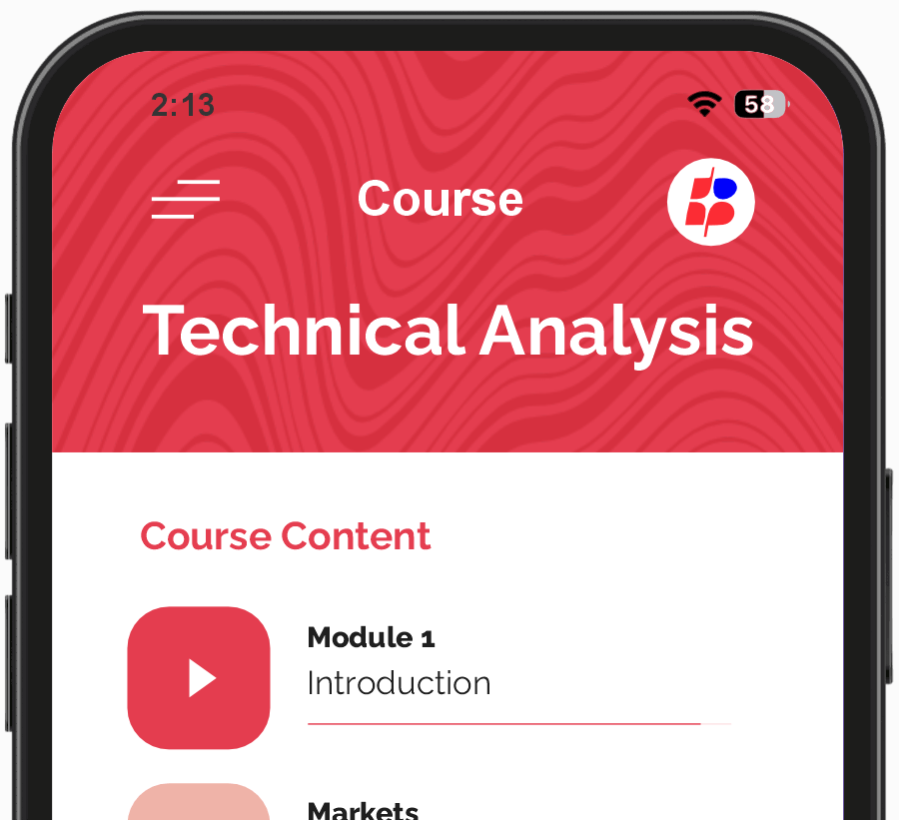Having a reliable strategy is essential for consistent profits in the world of forex. The R-Breaker strategy is one such system that many traders use to capitalize on market reversals and breakouts.
This strategy, initially popularized in the stock market, has found its way into Forex trading due to its adaptability and effectiveness in volatile markets.
In This Post
What is the R-Breaker Strategy in Forex Trading?
The R-Breaker strategy is a reversal and breakout trading system designed to capture profitable opportunities when price breaks through predefined levels of support or resistance.
It aims to identify market reversals and take advantage of price movements away from these critical levels.
The strategy is based on three key price points: Pivot, Breakout, and Reversal levels. These levels are calculated based on the previous day’s high, low, and close prices.
The goal is to catch the market when it is either breaking out of a range or reversing back into one.
How Does the R-Breaker Strategy in Forex Trading Work?
The R-Breaker strategy revolves around six critical price levels:
Pivot Level: The central price level from which all other levels are calculated.
Buy Break Level: A price level above which a buy breakout is triggered.
Sell Break Level: A price level below which a sell breakout is triggered.
Buy Reversal Level: The price level above which the market is expected to reverse from a buy position.
Sell Reversal Level: The price level below which the market is expected to reverse from a sell position.
Range Boundary: This defines the trading range between the buy and sell levels.
R-Breaker Formula
To calculate the different price levels for the R-Breaker strategy, use the following formulas:
Pivot Level (P)
P= Previous High + Previous Low + Previous Close
___________________________________________
3
Buy Break Level (BB)
BB = Previous High + 0.35 + (Previous Close- Previous Low)
Sell Break Level (SB)
SB = Previous Low – 0.35 (Previous High – Previous Close)
Buy Reversal Level (BR)
BR = BB + 0.07 (Previous High – Previous Low)
Sell Reversal Level (SR)
SR = SB – 0.07(Previous High – Previous Low
When the price crosses one of these levels, it signals a potential trading opportunity, either as a breakout or a reversal trade.
Benefits of Using the R-Breaker Strategy in Forex Trading
1. Effective in Trending and Ranging Markets
The R-Breaker strategy is versatile enough to work in both trending and ranging markets, making it an ideal choice for Forex traders dealing with varying market conditions.
2. Well-defined Entry and Exit Points
The calculated price levels give traders clear entry and exit points, helping to remove ambiguity from trading decisions.
3. Adaptable Across Multiple Timeframes
Whether you’re a day trader, swing trader, or even a long-term investor, the R-Breaker strategy can be applied across different timeframes in Forex trading.
4. Simple to Implement
Once the price levels are calculated, executing trades becomes straightforward, reducing the complexity involved in decision-making.
Limitations of the R-Breaker Strategy in Forex Trading
1. Lagging Signals
Since the R-Breaker strategy uses historical price data to calculate the levels, it can sometimes produce lagging signals, causing traders to enter or exit trades late.
2. False Breakouts
In highly volatile or choppy markets, the R-Breaker strategy may give false breakout signals, leading to potential losses.
3. Not Ideal for Beginners
Understanding and applying the formulas can be challenging for novice traders, especially without the aid of automated tools or trading platforms that calculate these levels.
R-Breaker Strategy Setup in Forex Trading
Step 1: Identify the Previous Day’s High, Low, and Close
The first step is to gather data from the previous day’s trading session, which includes the high, low, and closing prices.
Step 2: Calculate the Pivot, Breakout, and Reversal Levels
Using the formulas mentioned above, calculate the various price levels that will dictate your trade entries and exits for the current day.
Step 3: Wait for the Breakout or Reversal Signal
If the price moves beyond the Buy Break Level (BB), it signals a buy breakout trade.
If the price drops below the Sell Break Level (SB), it signals a sell breakout trade.
A reversal trade is signaled when the price reaches either the Buy Reversal Level (BR) or the Sell Reversal Level (SR).
Step 4: Set Stop-Loss and Take-Profit Levels
For a breakout trade, place the stop-loss at the pivot level and set your take-profit target based on the average price range of the currency pair.
For a reversal trade, the stop-loss should be set just beyond the breakout level, while the take-profit can be set near the opposite pivot point.
Risk Management for R-Breaker Strategy in Forex Trading
Effective risk management is crucial when using the R-Breaker strategy in Forex trading. Here are some essential tips:
1. Position Sizing
Always trade with an appropriate position size based on your risk tolerance. Avoid over-leveraging, especially when trading with volatile currency pairs.
2. Use Tight Stop-Losses
The Forex market can be unpredictable, so always use stop-loss orders to limit your downside risk. In breakout trades, setting a tight stop-loss just below the breakout level can help minimize losses.
3. Avoid Trading During Major News Events
Major economic announcements can lead to unexpected market volatility, resulting in false breakouts. Be mindful of the economic calendar to avoid trading during these periods.
Comparison with Other Breakout Strategies
The R-Breaker strategy is often compared to other breakout strategies such as Bollinger Band Breakouts and Pivot Point Breakouts. Here’s a brief comparison:
1. Bollinger Bands
Focuses on volatility and price levels, using the upper and lower bands as breakout levels. While Bollinger Bands provide better insights into volatility, the R-Breaker strategy offers a more structured approach with predefined entry and exit points.
2. Pivot Points
Similar to the R-Breaker strategy, pivot points also use high, low, and close prices to determine potential support and resistance levels. However, pivot points lack the reversal mechanism that makes R-Breaker more versatile.
Major Challenges Encountered by Traders
The R-Breaker strategy, though widely used, poses several challenges that Forex traders often encounter. The following are these obstacles and analyze how they affect trading performance.
1. Dealing with Lagging Signals Challenge
The R-Breaker strategy is based on historical data — the previous day’s high, low, and close prices. This means the calculated pivot, breakout, and reversal levels are naturally lagging, which can result in missed opportunities in fast-moving markets.
For instance, during periods of high volatility, the price may break out of the predefined levels before a trader can react, leading to late entries and reduced profitability.
Solution: To minimise the impact of lagging signals, traders can consider using faster-moving indicators such as moving averages or combining the R-Breaker strategy with real-time volatility indicators like the Bollinger Bands.
This can help refine the timing of entries and improve the overall accuracy of trades. Additionally, staying vigilant during volatile market conditions is crucial to avoid delayed execution.
2. Overcoming False Breakouts Challenge
One of the most significant challenges when using the R-Breaker strategy is dealing with false breakouts.
False breakouts occur when the price moves beyond the breakout level, triggering a trade, but then quickly reverses back, resulting in losses.
This situation is particularly common in ranging or low-volatility markets, where price fluctuations can lead to deceptive signals.
Solution: To avoid false breakouts, traders should always confirm breakouts with additional indicators such as RSI (Relative Strength Index) or MACD (Moving Average Convergence Divergence).
These indicators can help filter out weak signals and confirm whether the breakout is likely to hold. Moreover, using a tight stop-loss just below or above the breakout point can limit losses in case of a false move.
3. Trading in Choppy Markets Challenge
The R-Breaker strategy works well in trending markets, but in choppy or sideways markets, where the price frequently oscillates between the breakout and reversal levels, it can generate confusing and contradictory signals.
Traders may experience a series of whipsaw trades, where the market gives a signal to buy, only to reverse shortly after, leading to small but consistent losses.
Solution: When the market is in a range-bound or choppy state, it’s essential to either avoid using the R-Breaker strategy altogether or combine it with a trend-filtering indicator, such as the ADX (Average Directional Index), to determine whether the market has enough momentum for a successful breakout.
Additionally, waiting for a stronger price confirmation before entering a trade can reduce the chances of getting caught in a false move.
4. Market Volatility and Risk Management Challenge
Volatility is both a blessing and a curse for the R-Breaker strategy.
While higher volatility increases the chances of capturing large moves, it also brings the risk of erratic price swings and sharp reversals, which can wipe out profits or hit stop-losses too frequently.
The unpredictable nature of the Forex market during news events or economic releases can make the R-Breaker strategy particularly vulnerable.
Solution: To manage risk effectively, traders should incorporate a strict risk management plan that includes position sizing, stop-losses, and take-profit levels.
During periods of extreme volatility, consider trading with smaller positions or even sitting out of the market entirely until conditions stabilize.
Using volatility-based indicators like the ATR (Average True Range) can help determine appropriate stop-loss levels based on the market’s current volatility.
5. Psychological Pressure of Reversal Trading Challenge
The R-Breaker strategy’s reliance on reversal levels can be mentally taxing for traders, especially if the market shows no clear trend.
Traders may hesitate to pull the trigger, fearing that the market might continue in its original direction rather than reversing, leading to missed opportunities or early exits.
Solution: Developing emotional discipline is critical when trading a reversal strategy. Backtesting the R-Breaker strategy in various market conditions can help traders gain confidence in its effectiveness.
Additionally, keeping a trading journal can help assess emotional reactions to trades and refine decision-making processes over time.
Frequently Asked Questions
1. Is the R-Breaker strategy suitable for beginners?
The R-Breaker strategy may be challenging for beginners due to the need for precise calculation of various price levels. However, with the help of trading platforms that automate these calculations, novice traders can still use this strategy effectively.
2. Can the R-Breaker strategy be automated?
Yes, many trading platforms allow traders to automate the R-Breaker strategy using custom scripts or expert advisors. This can help eliminate human error and ensure trades are executed at the right time.
3. Which currency pairs work best with the R-Breaker strategy?
The R-Breaker strategy can be applied to any major or minor currency pair. However, pairs with high volatility, such as EUR/USD, GBP/USD, or USD/JPY, tend to produce more reliable breakout signals.
Conclusion
The R-Breaker strategy is a valuable tool for Forex traders looking to capitalize on breakouts and reversals.
While it offers clear entry and exit signals, it requires a thorough understanding of market dynamics and risk management.
By using the R-Breaker strategy into your trading plan and combining it with other technical analysis tools, you can increase your chances of success in the Forex market.




